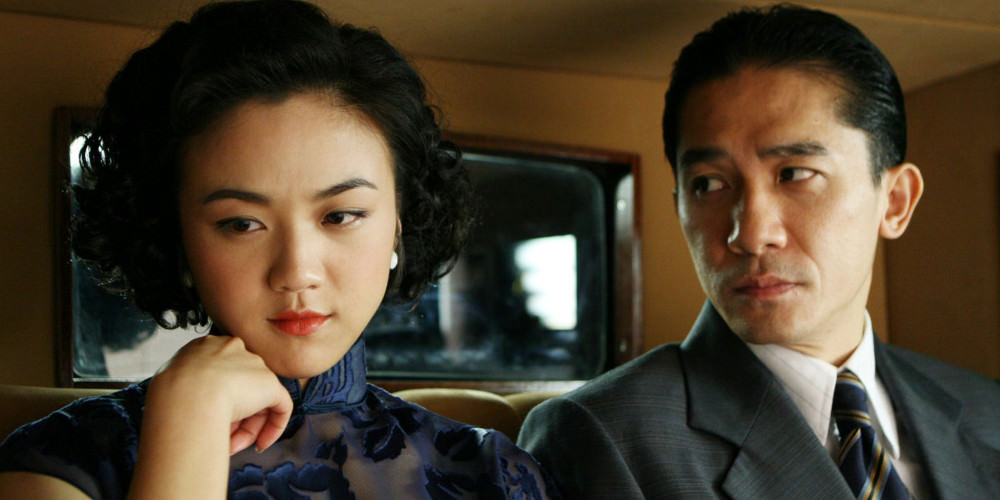Lust, Caution


China
Ang Lee’s 2007 film Lust, Caution was rated NC-17 in the United States, R18+ in Australia, and 18 in the United Kingdom. Despite the commercial consequences of an NC-17 rating, Lee asserted that the explicit sex scenes were crucial to the film’s narrative, rejecting the possibility of screening it in a compromised form. In Singapore, protests responding to an edited release rated at NC16 resulted in the exhibition of the uncut film rated at R21. While the film was exhibited unedited in both Taiwan and Hong Kong (where many mainland Chinese tourists are said to have travelled to see it), on 1 November 2007 a version with seven minutes of footage removed was released in mainland China, where it ranked third among domestic films at the 2007 box office (Rosen 2012).
Lust, Caution is set during the years of the second Sino-Japanese war (1937-45). In Hong Kong in 1938, Lingnan University student Wong Chia Chi (Tang Wei) joins a drama troupe that performs patriotic plays to raise funds for China’s defence. Fellow student Kuang Yu Min (Wang Leehom) develops a plan in which troupe members conspire to assassinate Mr Yee (Tony Leung), a high-ranking intelligence officer working in Wang Jingwei’s puppet government. As the most talented performer, Wong assumes the role of “Mrs Mai” and attempts to seduce Yee, however he soon returns to Shanghai with his wife. By 1942, Yee has risen the ranks of governmental significance, while Kuang is a member of the undercover Juntong, the Kuomintang (KMT) military agency. Wong meets with Kuang and they renew their former mission, with Wong becoming Yee’s mistress shortly thereafter. As a sexual relationship unfolds, Wong develops conflicting allegiances to her original mission and her feelings for Yee.
The film was widely discussed for its passionate love scenes. Featuring little dialogue, the transition from Wong and Yee’s first (aggressive and unclearly consensual) sexual encounter, to their third coupling in which Wong is evidently frustrated at her conflicting desire, feeling, and duty, conveys the characters’ changing allegiances and entanglements. However, it was not only sexual material that was cut from the release in Mainland China. In addition to curtailing visible violence in an early stabbing scene, dialogue is modified in a scene where Wong warns Yee about an imminent attack on his life. This apparent wartime betrayal of the Chinese resistance is likely to have been considered as controversial as the explicit sex scenes were. Stanley Rosen (2012, 212-213) writes that during an annual meeting of the National People’s Congress, a veteran Communist Party member characterised the film as a “glorification of traitors and insult to patriots”, arguing that it should never have been exhibited. State Administration of Radio, Film and Television (SARFT) employees were subsequently fired and SARFT enthusiastically publicised censorship guidelines on its website (Wang 2014, 404). Further, Tang Wei was made a non-person by the Chinese state until her reappearance on screens in 2009. A series of skin care advertisements in which Tang starred were never aired and an order was made banning any promotion of the actress, including newspaper articles or television stories that mentioned her (Hemelryk Donald 2010). As follows many censorship controversies in China, renewed calls were made for a film classification system. On this occasion, Liu Binjie, Director of the General Administration of Press and Publications (GAPP) claimed that “Under the current circumstances, a film rating system equals legalizing the mass production of pornographic publications” (in Rosen 2012, 213). – Liam Grealy
Further reading:
– Rosen, S. (2012). Film and society in China: The logic of the market. In Y. Zhang (ed.) A companion to Chinese cinema, (pp. 197-217). Malden & Oxford: Blackwell Publishing.
– Wang, F. (2014). The need for a film rating system in China: The case for Ang Lee’s Lust, Caution (2007). New Review of Film and Television Studies. 12(4): 400-411.